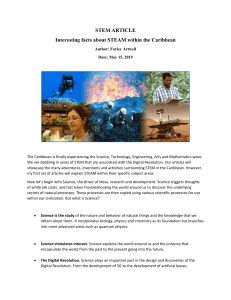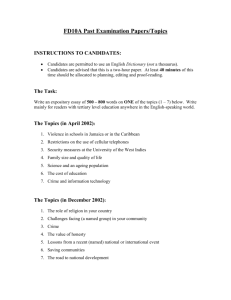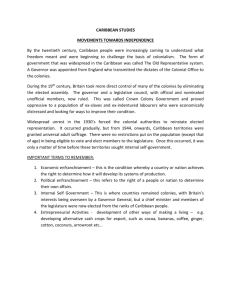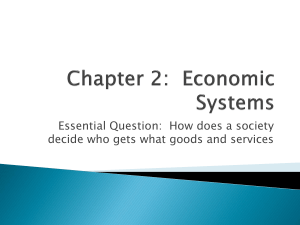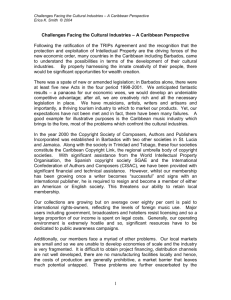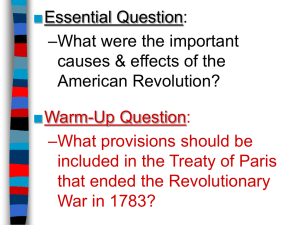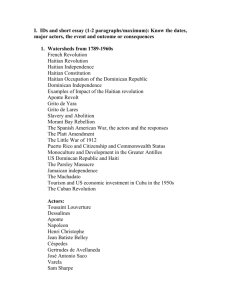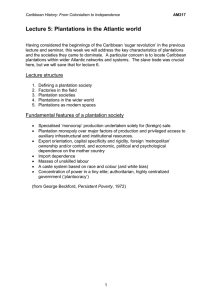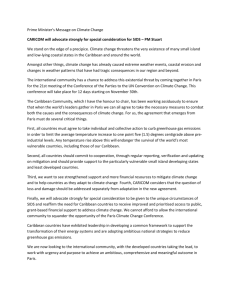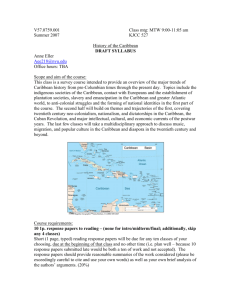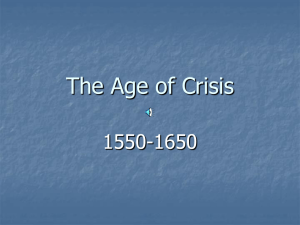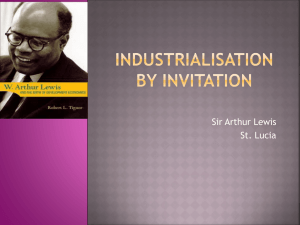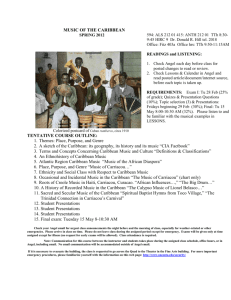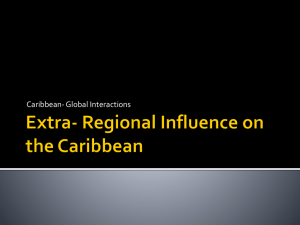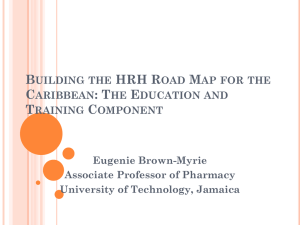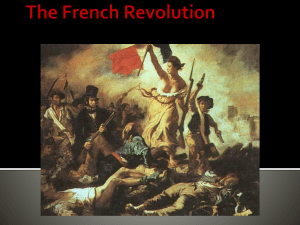WHY HISTORY?
advertisement
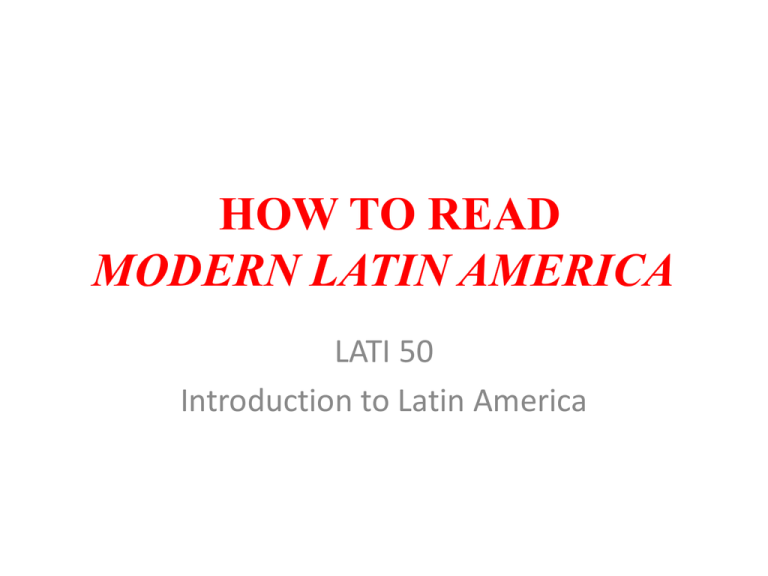
HOW TO READ MODERN LATIN AMERICA LATI 50 Introduction to Latin America … and learn to love it! CASE STUDIES • Mexico: The Taming of a Revolution • Central America and the Caribbean: Within the U.S. Orbit • Cuba: Key Colony, Socialist State • The Andes: Soldiers, Oligarchs, and Indians • Colombia: Civility and Violence • Venezuela: The Perils of Prosperity • Argentina: Progress and Stalemate • Chile: Repression and Democracy • Brazil: The Awakening Giant ANALYTICAL THEMES • economic transformations induce social changes which, in turn, lead to political consequences • shifting alliances among social class groups give shape to patterns of political conflict over time • a country’s place in the international division of labor defines the shape of available paths to economic growth • differences in economic processes have produced different forms of social structure and patterns of social change SOCIAL STRUCTURE • Upper Class: – Urban (industrialists, bankers) – Rural (landowners) • Middle Class: – Urban (merchants, lawyers, etc.) – Rural (small farmers) • Popular/Lower Class: – Urban (workers) – Rural (peasants, campesinos) • National Institutions: – State (including military) – Church • External Sector: – Economic (investors, merchants) – Political (foreign governments) CHRONOLOGY OF CHANGE • Liberal Era (1880s-1920s) – Export-import development – Oligarchs and strong men • Import-Substitution Industrialization (1930s-1970s) – Industrialization – Populism and dictatorship • Socialist Alternative (1950s-1980s) – Revolutionary movements – State-controlled economies • Neoliberalism (1980s-present) – Pro-market policies – Democracy (of sorts) COMPARING POLITICS • Mexico: Revolution of 1910 + dominant-party system • Central America and Caribbean: plantation society, U.S. influence, dictatorship and protest • Cuba: plantation society, socialist revolution, resistance to United States • Question A: Compare Mexican and Cuban revolutions • Question B: Trace colonial legacies in Mexico and CA + Caribbean • Question C: Why not more revolution ferment in CA + Caribbean? THE MLA WEBSITE • Address: <www.oup.com/us/skidmore> • Overall structure • Documents 3, 6, 10

